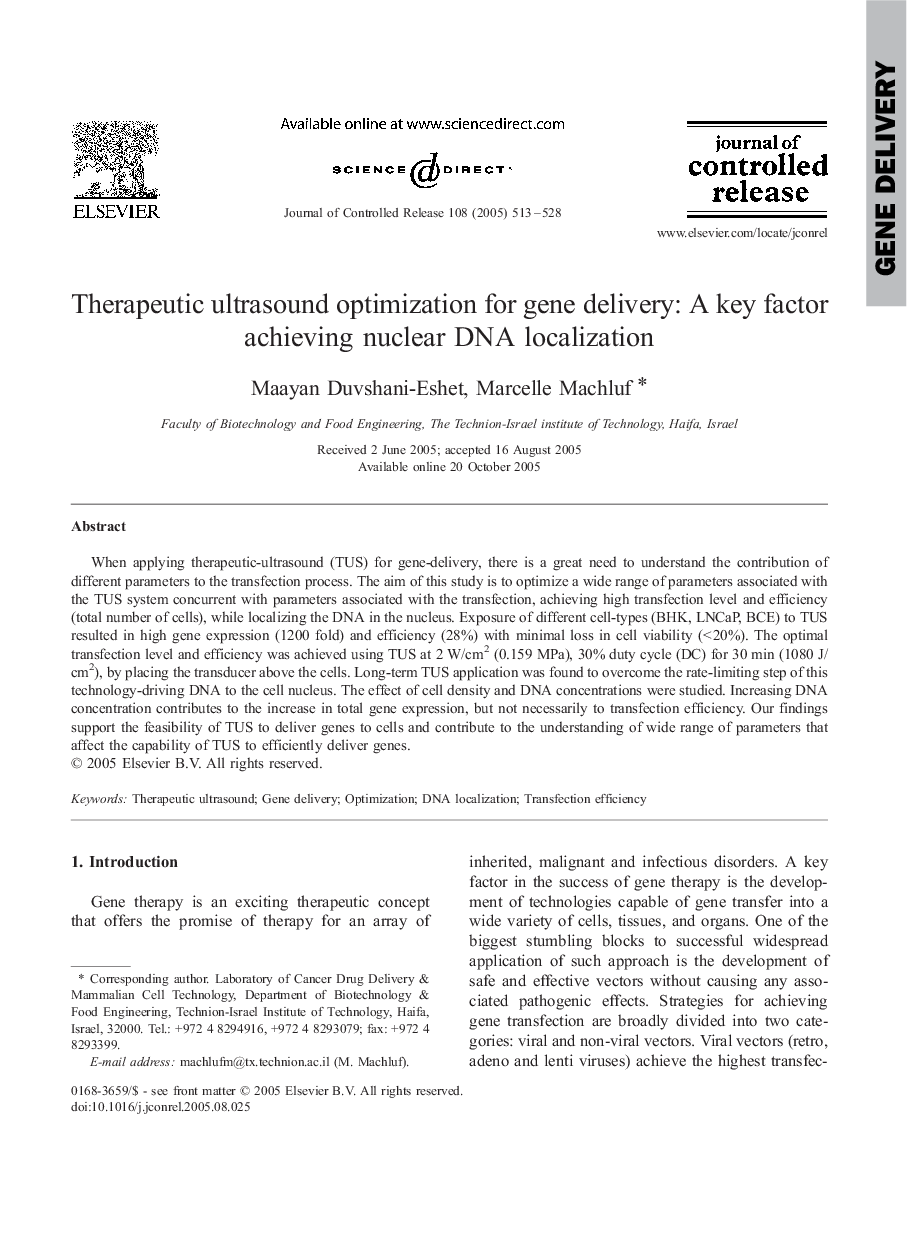| Article ID | Journal | Published Year | Pages | File Type |
|---|---|---|---|---|
| 9774637 | Journal of Controlled Release | 2005 | 16 Pages |
Abstract
When applying therapeutic-ultrasound (TUS) for gene-delivery, there is a great need to understand the contribution of different parameters to the transfection process. The aim of this study is to optimize a wide range of parameters associated with the TUS system concurrent with parameters associated with the transfection, achieving high transfection level and efficiency (total number of cells), while localizing the DNA in the nucleus. Exposure of different cell-types (BHK, LNCaP, BCE) to TUS resulted in high gene expression (1200 fold) and efficiency (28%) with minimal loss in cell viability (<Â 20%). The optimal transfection level and efficiency was achieved using TUS at 2 W/cm2 (0.159 MPa), 30% duty cycle (DC) for 30 min (1080 J/cm2), by placing the transducer above the cells. Long-term TUS application was found to overcome the rate-limiting step of this technology-driving DNA to the cell nucleus. The effect of cell density and DNA concentrations were studied. Increasing DNA concentration contributes to the increase in total gene expression, but not necessarily to transfection efficiency. Our findings support the feasibility of TUS to deliver genes to cells and contribute to the understanding of wide range of parameters that affect the capability of TUS to efficiently deliver genes.
Related Topics
Physical Sciences and Engineering
Materials Science
Biomaterials
Authors
Maayan Duvshani-Eshet, Marcelle Machluf,
